Tom Garncarz
Product Designer
Email me!
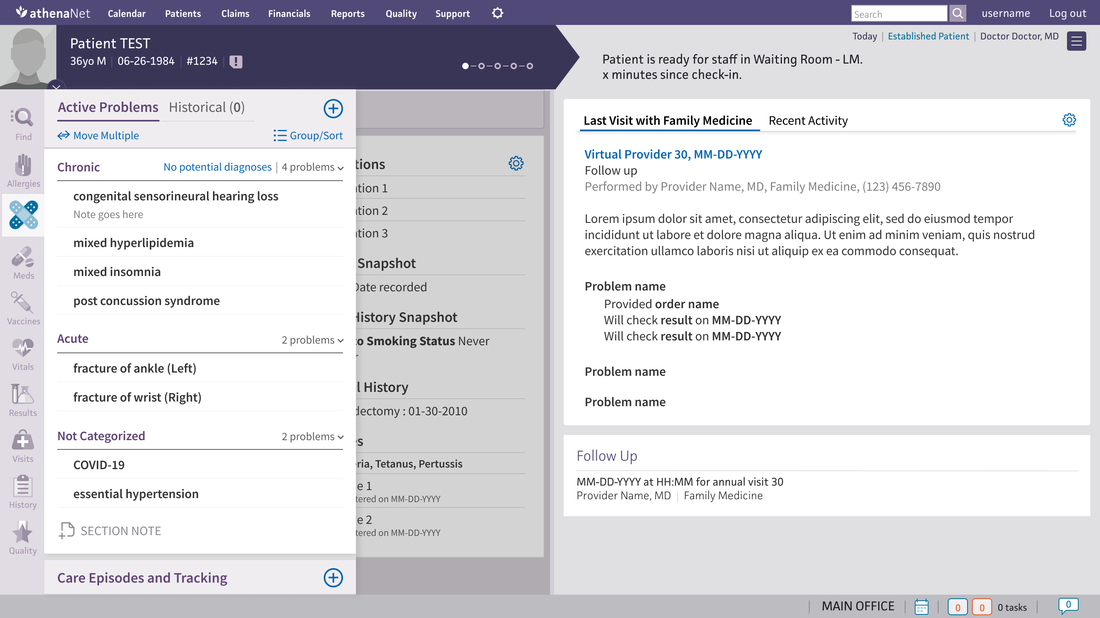
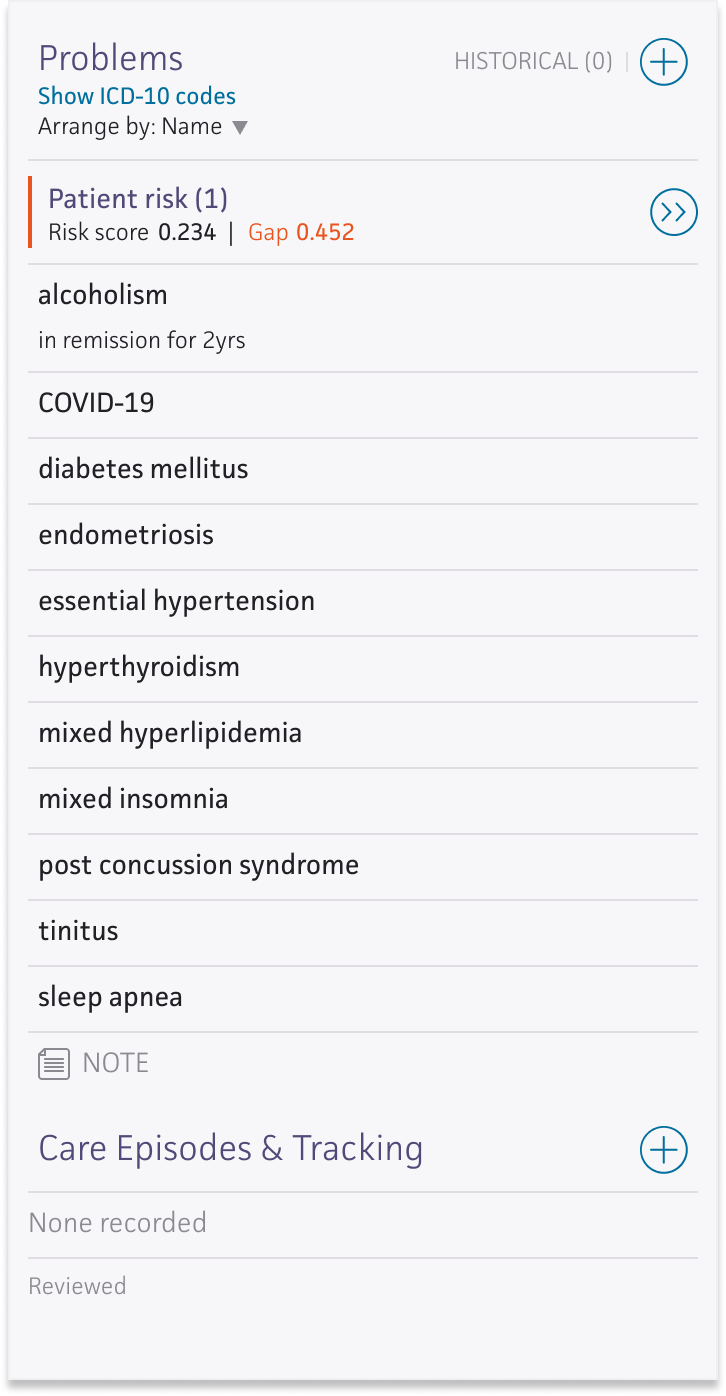
The old Problem List: barebones organizational functionality and cumbersome controls meant that the problem list rarely lived up to its potential as a source of truth about a patient's condition.
INSIGHT 1
Users need to be able to group problems in ways that matter.
INSIGHT 2
A single list of uncategorized problems is hard to parse quickly.
INSIGHT 3
Tidying up the problem list requires a ton of duplicative work.
INSIGHT 4
Competition arises when multiple doctors work on the same patient.
TENET 1
When problem lists get too messy, physicians stop using them.
TENET 2
Users need to be able to take action on multiple problems at once.
TENET 3
Usability improvements are crucial to improving clinical reliability.
TENET 4
Doctors need their own user-specific viewing settings.

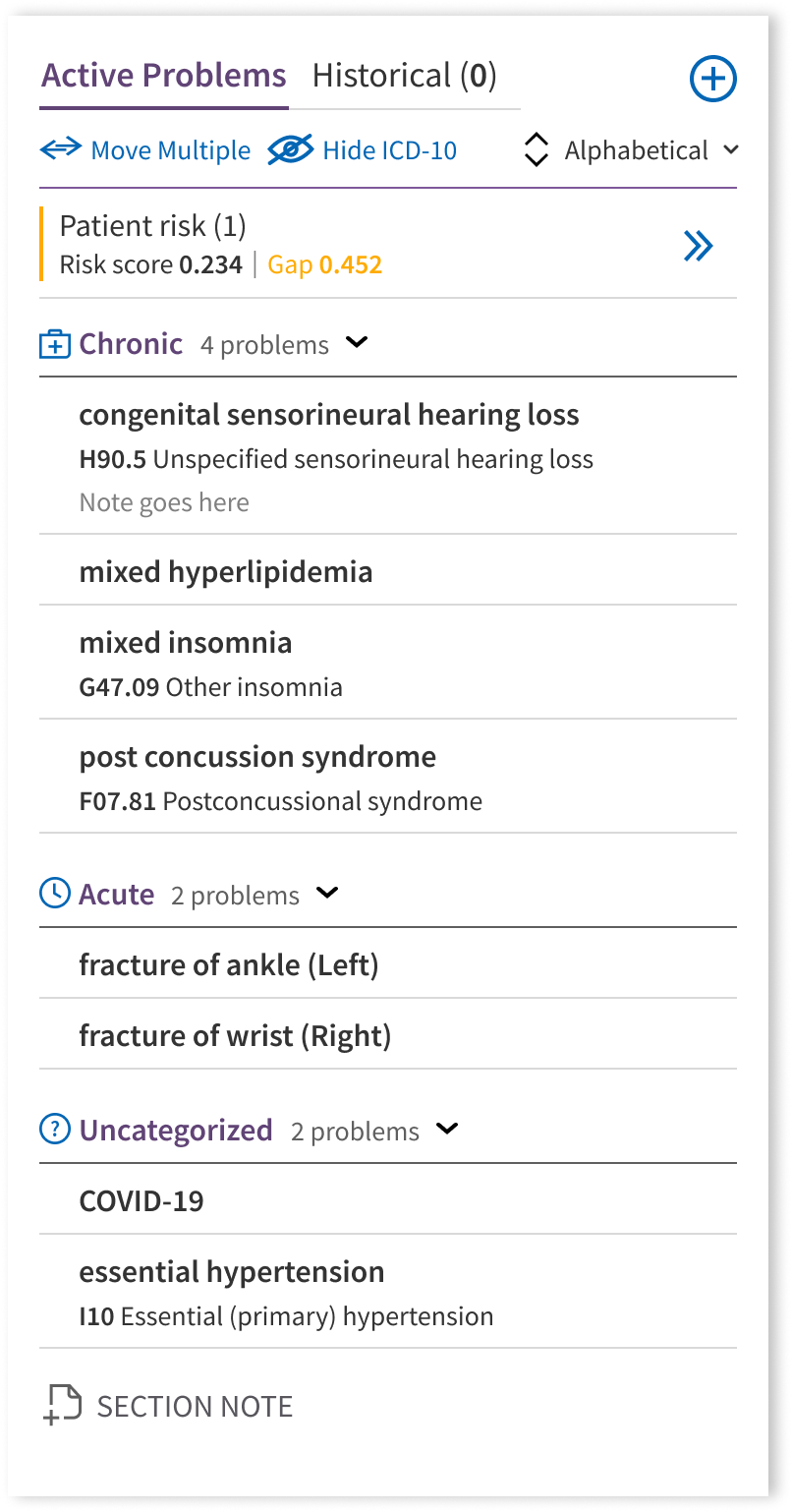
A constant challenge was finding a hierarchy that would be extensible for different categorization schemes in the future, without being too significant of a departure for long-time users.
Eventually, differentiating Chronic and Acute problems was determined to be the most broadly useful categorization for the team to pursue at first, with intent to be able to reuse the architecture in the future for more specialty-focused categorization.
The final architecture ended up looking like this:

A solid header visual helped the overall design come together by designating an obvious space for list manipulation tools.
This organization tested well with users, who were very happy with the improved readability and organization. Furthermore, features like additional viewing settings and bulk action were a hit with providers concerned about manipulating the list as much as consuming it.
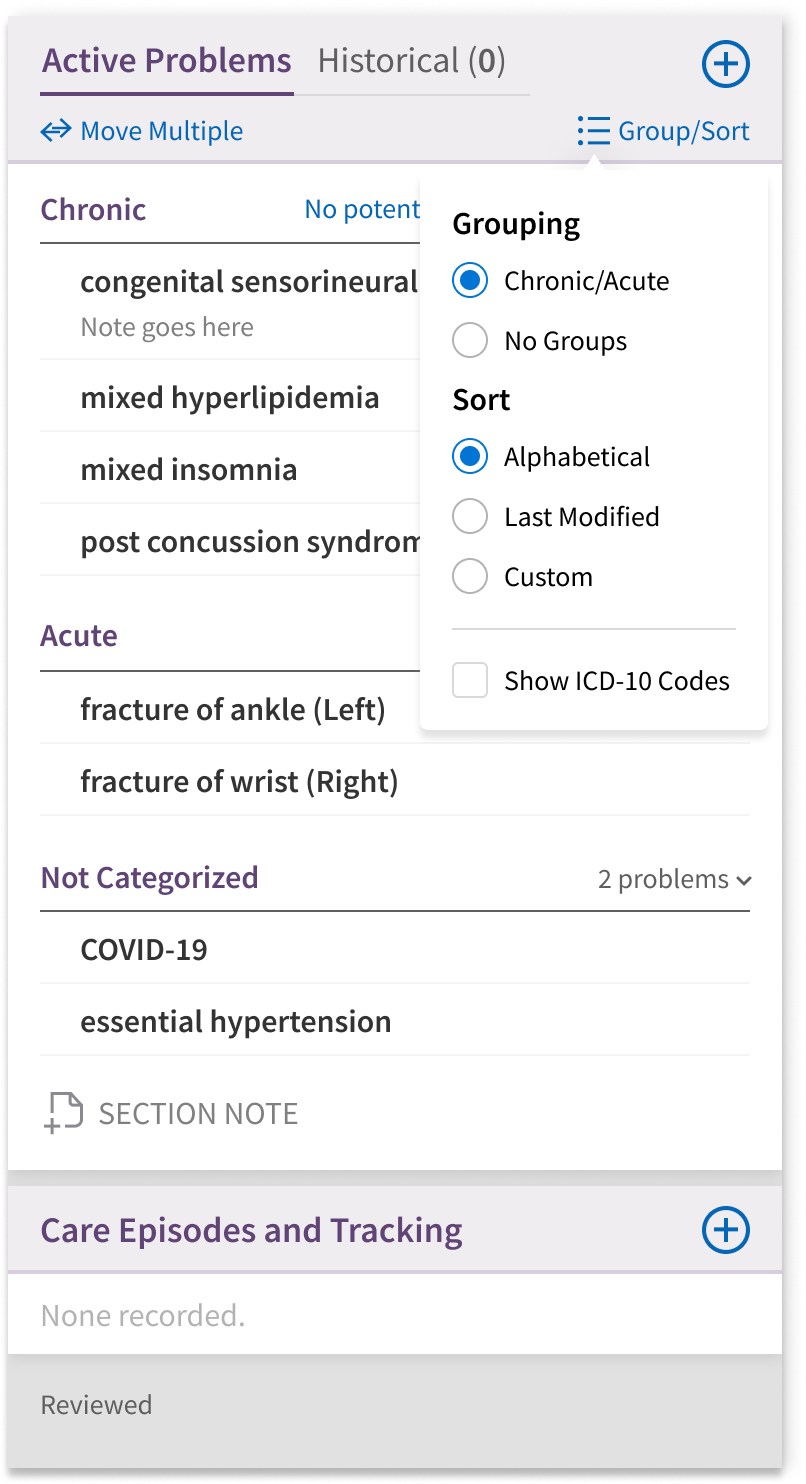
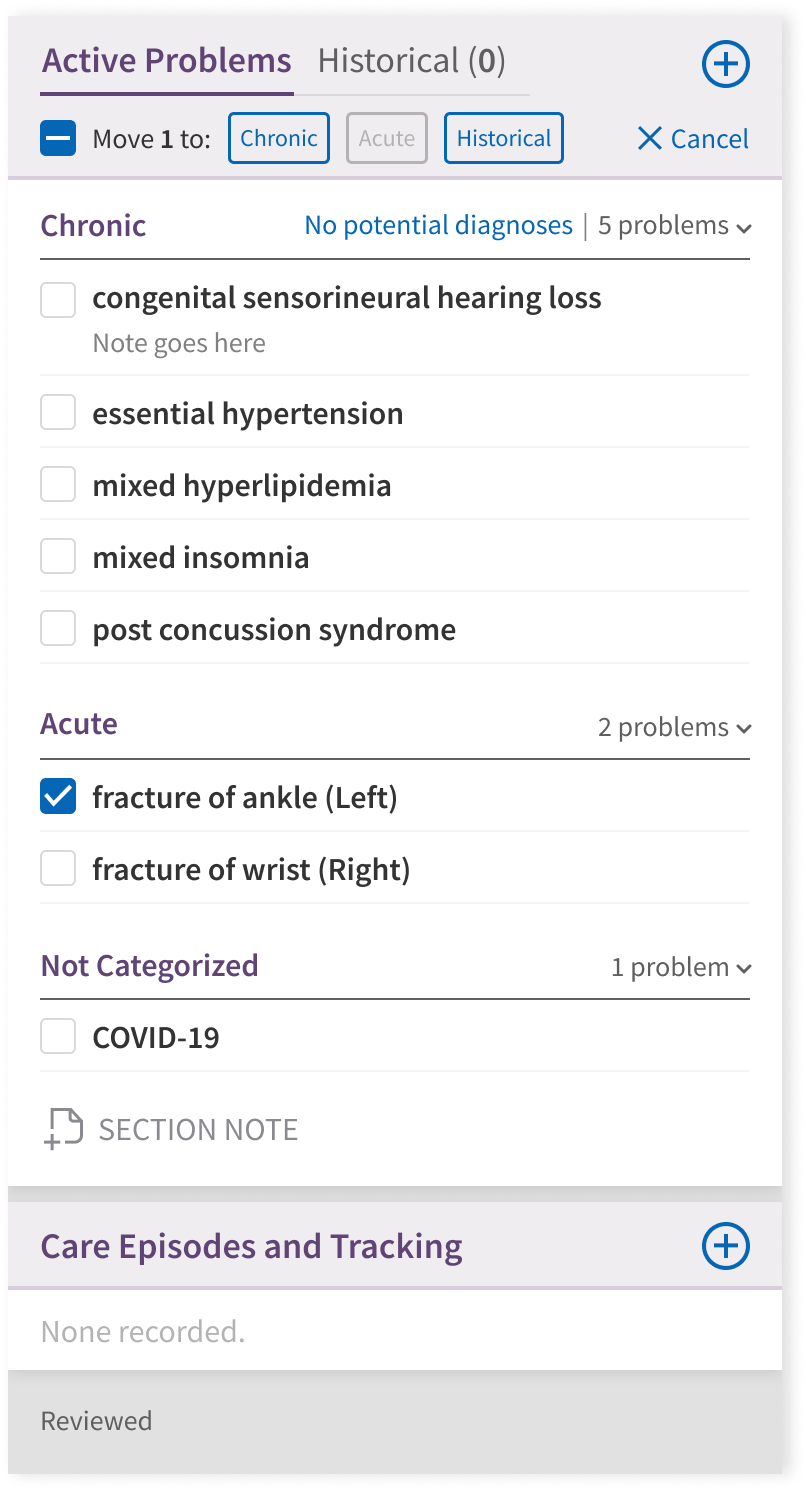
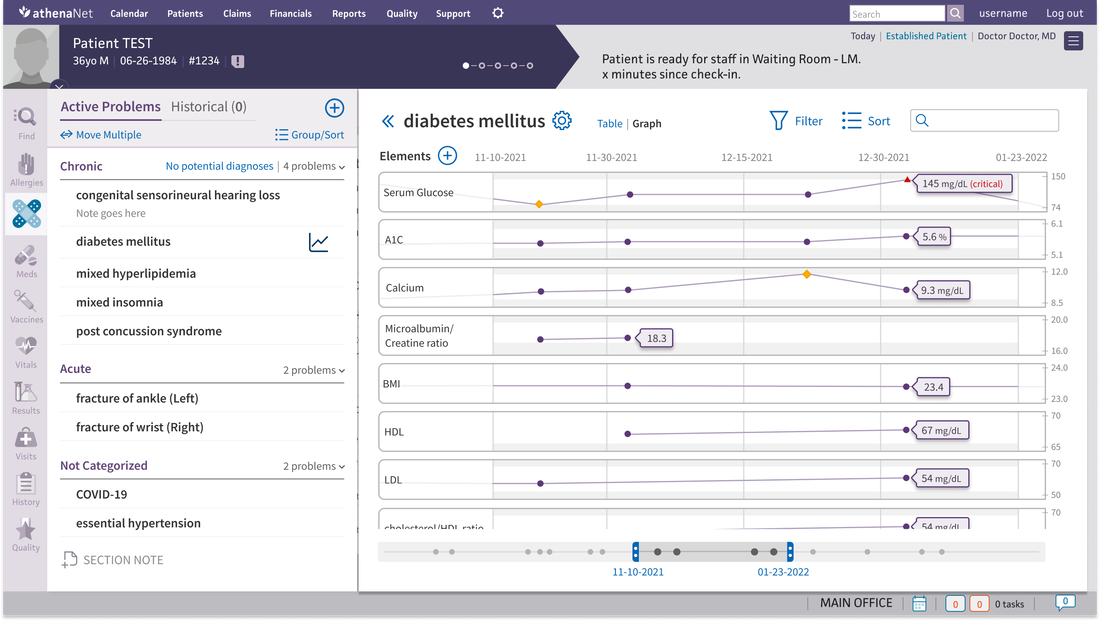
The next step: comprehensive data visualization and tracking of problem-related information over time.
Tom Garncarz
Product Designer
Send me an email!


The old Problem List: barebones organizational functionality and cumbersome controls meant that the problem list rarely lived up to its potential as a source of truth about a patient's condition.
INSIGHT 1
Users need to be able to group problems in ways that matter.
INSIGHT 2
A single list of uncategorized problems is difficult to parse quickly.
INSIGHT 3
Tidying up the problem list requires a ton of duplicative work.
INSIGHT 4
Competition arises when multiple doctors work on the same patient.
DESIGN TENET 1
When problem lists become too messy, physicians stop using them.
DESIGN TENET 2
Users need to be able to take action on multiple problems at once.
DESIGN TENET 3
Usability improvements are crucial to improving clinical reliability.
DESIGN TENET 4
Doctors need their own user-specific viewing settings.


A constant challenge was finding a hierarchy that would be extensible for different categorization schemes in the future, without being too significant of a departure for long-time users.
Eventually, differentiating Chronic and Acute problems was determined to be the most broadly useful categorization for the team to pursue at first, with intent to be able to reuse the architecture in the future for more specialty-focused categorization. As such, the final architecture ended up looking like this:

A solid header visual helped the overall design come together by designating an obvious space for list manipulation tools.
This organization tested well with users, who were very happy with the improved readability and organization. Furthermore, features like additional viewing settings and bulk action were a hit with providers concerned about manipulating the list as much as consuming it.



The next step: comprehensive data visualization and tracking of problem-related information over time.
Tom Garncarz
Product Designer
Send me an email!


The old Problem List: barebones organizational functionality and cumbersome controls meant that the problem list rarely lived up to its potential as a source of truth about a patient's condition.
INSIGHT 1
Users need to be able to group problems in ways that matter.
INSIGHT 2
A single list of uncategorized problems is difficult to parse quickly.
INSIGHT 3
Tidying up the problem list requires a ton of duplicative work.
INSIGHT 4
Competition arises when multiple doctors work on the same patient.
DESIGN TENET 1
When problem lists become too messy, physicians stop using them.
DESIGN TENET 2
Users need to be able to take action on multiple problems at once.
DESIGN TENET 3
Usability improvements are crucial to improving clinical reliability.
DESIGN TENET 4
Doctors need their own user-specific viewing settings.


A constant challenge was finding a hierarchy that would be extensible for different categorization schemes in the future, without being too significant of a departure for long-time users.
Eventually, differentiating Chronic and Acute problems was determined to be the most broadly useful categorization for the team to pursue at first, with intent to be able to reuse the architecture in the future for more specialty-focused categorization. As such, the final architecture ended up looking like this:

A solid header visual helped the overall design come together by designating an obvious space for list manipulation tools.
This organization tested well with users, who were very happy with the improved readability and organization. Furthermore, features like additional viewing settings and bulk action were a hit with providers concerned about manipulating the list as much as consuming it.



The next step: comprehensive data visualization and tracking of problem-related information over time.